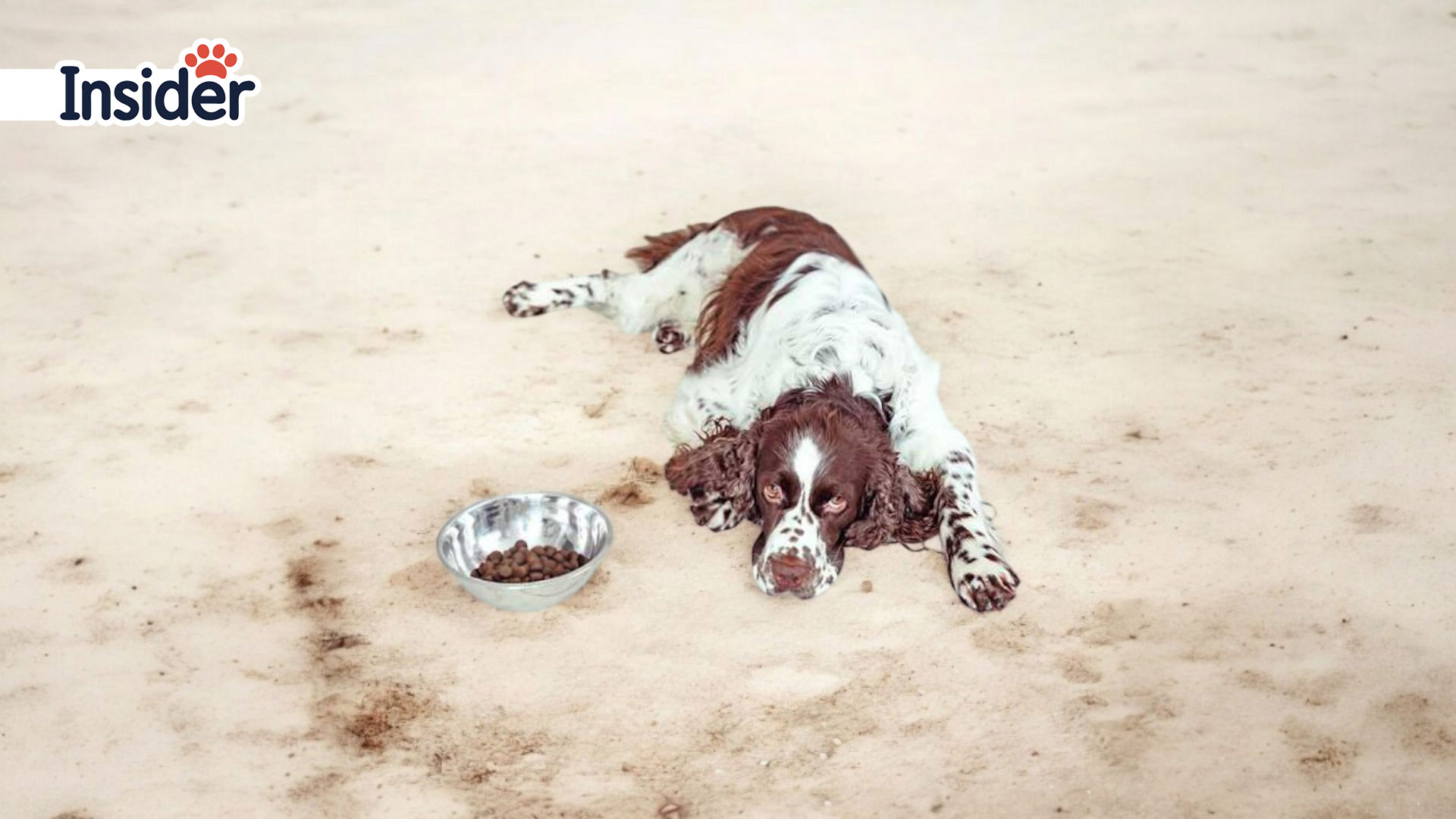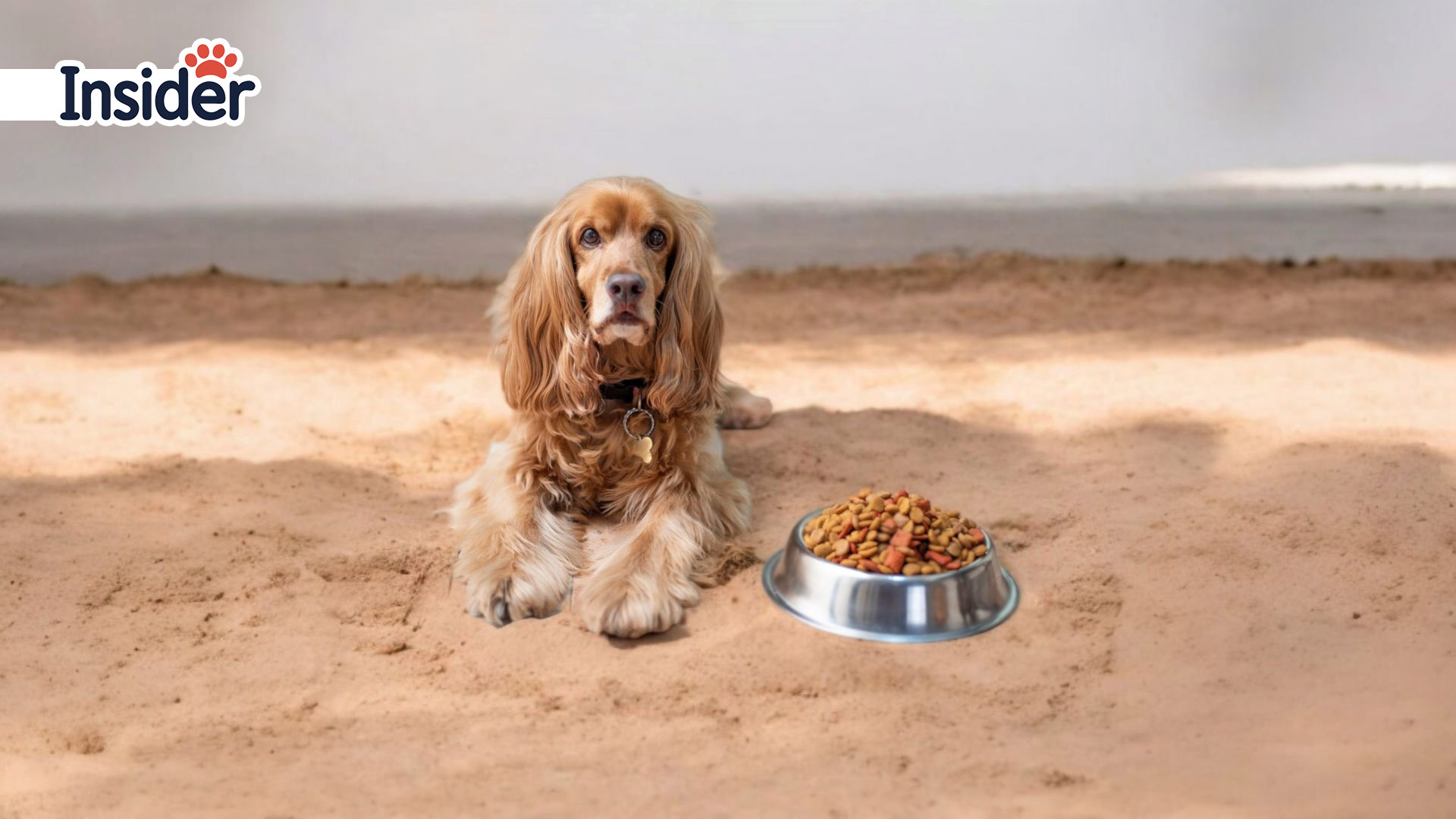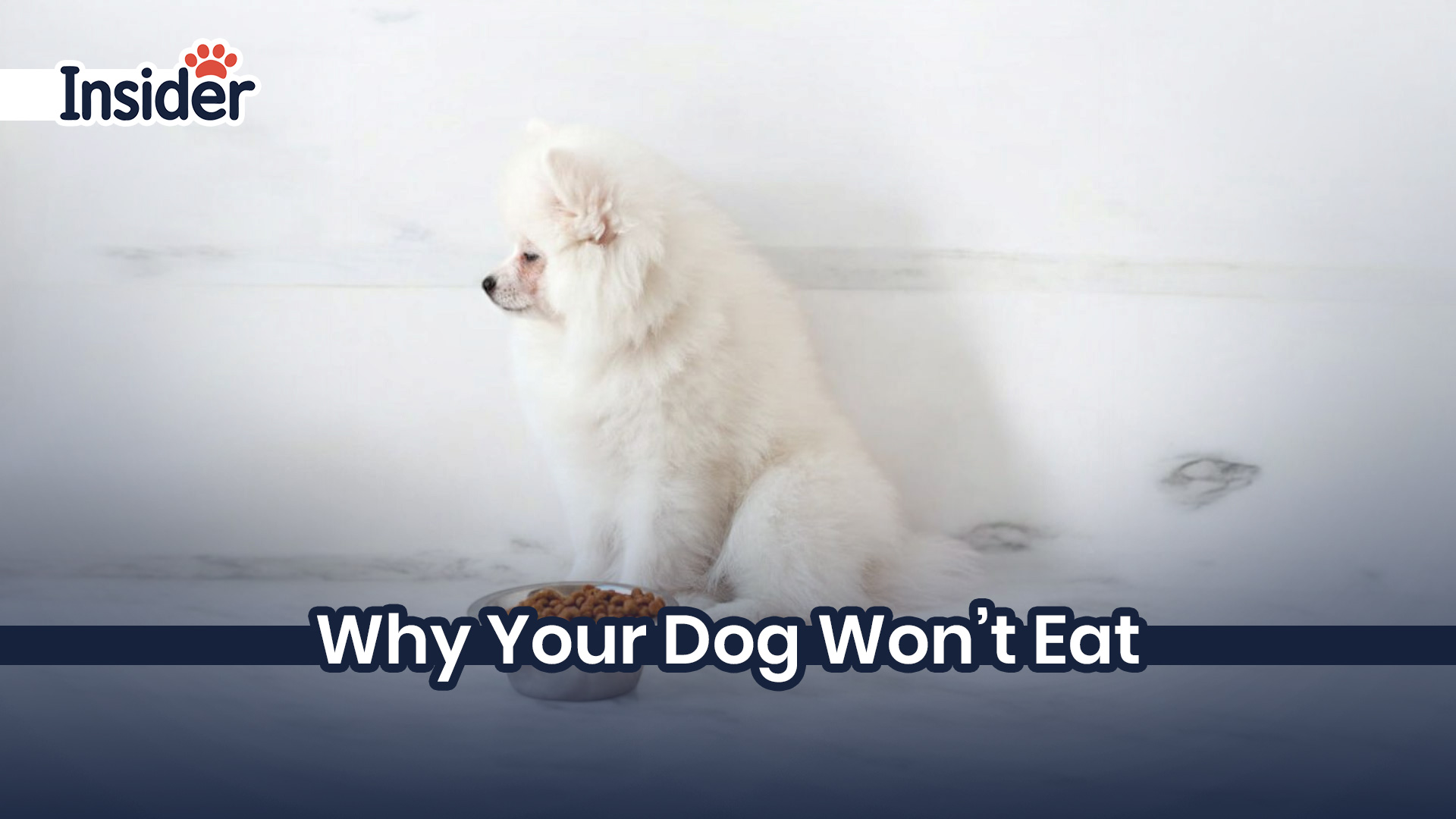Understanding Normal vs. Concerning Appetite Changes
Every dog is unique, just like every person is unique. Some dogs are naturally enthusiastic eaters who finish their meals in seconds, while others are more leisurely diners who prefer to graze throughout the day. Getting to know your dog’s normal eating patterns is crucial for recognizing when something might be off.
| Category | Key Points |
|---|---|
| Normal vs. Concern | Skipping a meal is normal; persistent loss (>1-2 days) or added symptoms needs attention. |
| Medical Causes | Dental pain, digestive issues, or serious illnesses (e.g., kidney, liver problems) can reduce appetite. |
| Stress & Anxiety | Emotional distress (e.g., separation anxiety, loud noises) often leads to temporary appetite loss. |
| Environmental Change | Moving, new pets, or routine disruptions can cause short-term eating issues. |
| Food-Related Issues | Spoiled food, sudden diet changes, or dislike of food can affect eating behavior. |
| Age Factors | Puppies and seniors need quicker intervention; adult dogs are more resilient to brief loss. |
| When to Call a Vet | Urgent if not eating and showing symptoms like lethargy, vomiting, or dehydration. |
| Home Remedies | Try warming food, adding broth, reducing stress, and feeding in a calm, familiar environment. |
It’s actually quite normal for dogs to occasionally skip a meal or show less interest in food from time to time. Just like us, they can have off days where they’re simply not as hungry as usual. However, when appetite loss persists for more than a day or two, or when it’s accompanied by other symptoms, that’s when it’s time to start paying closer attention.
The key is learning to distinguish between temporary appetite fluctuations and more serious issues. A dog who skips breakfast but eagerly eats dinner is probably fine. A dog who refuses multiple meals and seems lethargic or unwell is telling you something important through their behavior.
Table of Contents
Medical Causes: When Health Issues Affect Appetite
Dental Problems and Oral Pain
One of the most overlooked causes of appetite loss in dogs is dental disease. Think about it if your mouth hurt every time you tried to chew, you’d probably avoid eating too! Dental problems are incredibly common in dogs, especially as they age, and they can make eating uncomfortable or even painful.
Broken teeth, gum disease, oral infections, and even something as simple as a piece of food stuck between their teeth can cause your dog to associate eating with discomfort. The frustrating thing about dental issues is that dogs are masters at hiding pain, so you might not realize there’s a problem until the discomfort becomes too much to bear.
Regular dental care and annual veterinary checkups can help prevent and catch these issues early. If you notice your dog pawing at their face, dropping food while eating, or showing interest in food but then backing away, dental problems could be the culprit.
Gastrointestinal Issues
The digestive system plays a central role in appetite regulation, so it makes sense that gastrointestinal problems would affect your dog’s desire to eat. Nausea is particularly effective at suppressing appetite just like when you have an upset stomach, the last thing you want to do is eat.
Conditions like gastritis, intestinal parasites, inflammatory bowel disease, or even simple dietary indiscretion (eating something they shouldn’t have) can all cause nausea and subsequent appetite loss. Sometimes these issues resolve on their own within a day or two, but persistent problems warrant veterinary attention.
Other gastrointestinal symptoms to watch for include vomiting, diarrhea, excessive drooling, or signs of abdominal discomfort. These symptoms, combined with appetite loss, often indicate that something is going on with your dog’s digestive system.
Systemic Illnesses
More serious medical conditions can also cause appetite loss as one of their symptoms. Loss of appetite in dogs doesn’t necessarily indicate serious disease, but prompt veterinary attention is important because it could be a sign of significant illness, including cancer, various systemic infections, pain, liver problems, and kidney failure.
These conditions affect the body’s overall functioning and often impact appetite as a secondary effect. The good news is that catching these issues early through regular veterinary care can make a significant difference in treatment outcomes.
If your dog’s appetite loss is accompanied by other concerning symptoms like lethargy, difficulty breathing, changes in urination or drinking habits, or any other unusual behaviors, it’s time to schedule a veterinary appointment sooner rather than later.

Behavioral and Emotional Factors
Stress and Anxiety
Dogs are emotionally complex creatures , and their feelings can absolutely affect their appetite. Stress and feeling anxious are natural appetite suppressants for your canine friend. Feelings of stress activate your dog’s sympathetic nervous system. This physiological response to stress can shut down the desire to eat, even in dogs who are normally food-motivated.
One of the most common reasons for a lack of appetite in dogs is separation anxiety. Dogs who struggle when left alone may lose their appetite entirely during times when their favorite humans aren’t around. This can create a concerning cycle where the dog associates their owner’s absence with not feeling well.
But separation anxiety isn’t the only type of stress that can affect appetite. Changes in routine, new environments, loud noises, or even the addition of a new pet or family member can all trigger stress-related appetite loss in sensitive dogs.
Environmental Changes
Dogs are creatures of habit who thrive on routine and familiarity. Environmental factors that often cause disruption to normal appetite include dietary change to unfamiliar food or food that is spoiled, and stress (e.g.boarding, new home, new pets, new family members).
Moving to a new home, having house guests, changes in family dynamics, or even rearranging furniture can sometimes affect a sensitive dog’s appetite. While these changes might seem minor to us humans, they can feel quite significant to our canine companions who rely on environmental consistency for their sense of security.
The good news is that appetite loss related to environmental changes is usually temporary. Most dogs adjust to new situations within a few days to a week, and their appetite typically returns to normal once they feel settled again.
Food-Related Issues
Food Quality and Freshness
Sometimes the simplest explanation is the right one. Your dog may not eat because of the food itself. It could be : Old or stale try throwing out the food and giving them something fresh. Dogs have an incredible sense of smell, and they can detect when food has gone bad long before we humans would notice.
Improper storage can cause dog food to become rancid or develop mold, making it unpalatable or even dangerous for your pet. Always store dry food in airtight containers and refrigerate opened cans or pouches. Check expiration dates regularly and trust your dog’s nose if they’re suddenly refusing food they used to love, freshness might be the issue.
Sudden Diet Changes
Dogs have sensitive digestive systems that work best with consistency. Abrupt changes in diet can cause gastrointestinal upset, which naturally leads to decreased appetite. If you need to switch your dog’s food, it’s always best to do so gradually over the course of 7-10 days, slowly mixing increasing amounts of the new food with decreasing amounts of the old food.
Some dogs are also simply pickier eaters than others. While we shouldn’t cater to every whim, it’s worth considering whether your dog genuinely dislikes their current food. Sometimes a protein source that worked well for months might suddenly become less appealing, and that’s okay.

Age-Related Considerations
Puppies vs. Adult Dogs vs. Senior Dogs
Age plays a significant role in how we should interpret and respond to appetite changes. Puppies are growing rapidly and typically have voracious appetites, so appetite loss in young dogs can be more concerning and requires quicker intervention. Their small size means they can become dehydrated or hypoglycemic more quickly than adult dogs.
Adult dogs in their prime typically have the most stable eating patterns, making changes in appetite easier to notice and evaluate. They can usually handle missing a meal or two without immediate health consequences, giving you a bit more time to observe and assess the situation.
Senior dogs present their own unique challenges. As dogs age, their metabolism slows down, and they may naturally eat less than they did in their younger years. However, age-related health issues become more common, so appetite changes in senior dogs should always be taken seriously and evaluated by a veterinarian.
Breed-Specific Considerations
Different dog breeds can have varying susceptibilities to appetite issues. Some breeds are naturally more food-motivated than others, while some are prone to specific health conditions that can affect appetite. Understanding your dog’s breed characteristics can provide valuable context when evaluating appetite changes.
For example, brachycephalic breeds (those with flat faces) might have more difficulty eating in hot weather due to their breathing challenges. Working breeds might be more affected by changes in activity levels, while toy breeds might be more sensitive to stress and environmental changes.
When to Worry: Red Flag Symptoms
Immediate Veterinary Attention Required
While occasional appetite loss isn’t usually cause for immediate panic, certain combinations of symptoms warrant urgent veterinary care. If your dog isn’t eating AND is showing signs of lethargy, vomiting, diarrhea, difficulty breathing, or any other concerning symptoms, don’t wait to see if things improve on their own.
If your dog refuses to eat and has additional symptoms, such as vomiting, diarrhea, or lack of energy, you should contact your vet immediately. These combinations of symptoms can indicate serious medical conditions that require prompt treatment.
Also pay attention to your dog’s hydration status. A dog who isn’t eating but is still drinking water is generally in less immediate danger than a dog who has stopped both eating and drinking. Dehydration can become life threatening much more quickly than hunger.
Timeline for Concern
Generally speaking, healthy adult dogs can safely go without food for 24-48 hours without serious health consequences, assuming they’re still drinking water and acting relatively normal otherwise. However, this timeline can vary significantly based on the dog’s age , size, and overall health status.
Puppies, senior dogs, and dogs with chronic health conditions have much shorter safe windows for appetite loss. When in doubt, it’s always better to contact your veterinarian sooner rather than later. They can help you determine whether your dog’s situation requires immediate attention or if it’s safe to monitor at home for a bit longer.

Practical Solutions and Home Remedies
Making Food More Appealing
Sometimes a few simple tricks can help rekindle your dog’s interest in food. Warming their food slightly can enhance the aroma and make it more appealing just make sure it’s not too hot! Adding a small amount of low-sodium chicken broth or a tiny bit of plain cooked chicken can also make regular kibble more enticing.
Creating a calm, quiet feeding environment can help dogs who are stressed or anxious about eating. Some dogs prefer to eat alone, while others like company. Experiment with different approaches to see what works best for your individual dog.
Hand feeding can sometimes work for dogs who are feeling under the weather or anxious. The personal attention and encouragement from their favorite human can sometimes be enough to get them started eating again.
Feeding Schedule Adjustments
Consider whether your dog’s feeding schedule might need adjustment. Some dogs do better with smaller, more frequent meals rather than one or two large meals per day. Others prefer having food available all the time (free feeding), though this approach doesn’t work well in multi pet households.
Pay attention to your dog’s activity levels and adjust feeding times accordingly. A dog who gets their main exercise in the evening might prefer their largest meal after their walk, when they’ve worked up an appetite.
Stress Reduction Techniques
If stress or anxiety is contributing to your dog’s appetite loss, addressing the underlying emotional issue is key to long-term success. This might involve maintaining consistent routines, providing a safe space where your dog can retreat when feeling overwhelmed, or working with a professional dog trainer or behaviorist for more complex anxiety issues.
This type of appetite loss is short-term and frequently related to small factors like slight illness, stress, change in environment, or temporary decline in appetite due to weather conditions. In most cases, the dog’s appetite returns to normal within a few days.
Prevention and Long-Term Management
Regular Health Monitoring
The best approach to managing appetite issues is preventing them when possible and catching problems early when prevention isn’t possible. This means maintaining regular veterinary checkups, even when your dog seems perfectly healthy. Annual wellness exams can catch developing health issues before they become serious enough to affect appetite.
Keep a feeding log if your dog has recurring appetite issues. Note what they eat, when they eat, any symptoms that accompany appetite changes, and any potential triggers you can identify. This information can be invaluable for your veterinarian in determining patterns and potential causes.
Creating a Positive Feeding Environment
Establishing consistent, positive feeding routines can help prevent many behavioral causes of appetite loss. Feed your dog in the same location at roughly the same times each day. Make mealtime a positive experience by staying calm and patient, even when your dog isn’t eating as enthusiastically as usual.
Avoid making mealtime stressful by forcing your dog to eat or showing anxiety about their appetite. Dogs are incredibly perceptive and can pick up on our emotions, which can actually make appetite problems worse.
Building Food Motivation
For dogs who are naturally less food-motivated, you can work on building positive associations with mealtime. Use puzzle feeders or food toys to make eating more engaging and fun. Practice basic training exercises before meals to help your dog work up an appetite and create positive anticipation around food.

Supporting Your Dog Through Appetite Challenges
Working with Your Veterinarian
Building a good relationship with your veterinarian is one of the most important things you can do for your dog’s long-term health. Don’t hesitate to call with questions or concerns most veterinary clinics are happy to provide guidance over the phone for minor issues and can help you determine when an appointment is necessary.
Be prepared to provide detailed information about your dog’s eating habits, any symptoms you’ve observed, and any recent changes in routine or environment. The more information you can provide, the better your veterinarian can help you determine the best course of action.
Monitoring and Documentation
Keep track of your dog’s eating patterns, especially during times when appetite is reduced. Note how much they eat, when they eat, what foods they accept or refuse, and any other symptoms or behaviors you observe. This documentation can be incredibly helpful for identifying patterns and triggers.
Take photos or videos of your dog’s behavior if you’re concerned about something specific. Sometimes it’s easier to show your veterinarian what you’re seeing rather than trying to describe it in words.
Maintaining Your Own Emotional Well-being
Caring for a dog who won’t eat can be emotionally draining and stressful. Remember that you’re doing your best, and most appetite issues resolve with time and appropriate care. Don’t blame yourself if your dog isn’t eating there are many factors beyond your control that can affect appetite.
Reach out for support when you need it, whether that’s from your veterinarian, fellow dog owners, or online communities. Sometimes just talking through your concerns with someone who understands can provide valuable perspective and emotional relief.
Comparison of Common Appetite Loss Scenarios
| Scenario | Typical Duration | Primary Concern | Action Needed |
|---|---|---|---|
| Mild illness recovery | 1-3 days | Dehydration risk | Monitor closely, ensure water intake |
| Stress from environmental change | 3-7 days | Behavioral adaptation | Provide routine, comfort |
| Dental pain | Ongoing until treated | Pain management | Veterinary examination |
| Serious medical condition | Variable | Overall health decline | Immediate veterinary care |
| Age Group | Safe Appetite Loss Duration | Special Considerations | Emergency Signs |
|---|---|---|---|
| Puppies | 12-24 hours | Hypoglycemia risk | Lethargy, weakness |
| Adult dogs | 24-48 hours | Generally more resilient | Combined symptoms |
| Senior dogs | 12-24 hours | Underlying health issues | Any additional symptoms |
Conclusion: A Journey of Understanding and Care
Navigating appetite loss in dogs requires patience, observation, and sometimes professional guidance. While it can be scary when our beloved companions refuse to eat, understanding the many potential causes can help us respond appropriately and provide the best possible care.
Remember that appetite can be altered by medical conditions, behavioral conditions, environmental changes, or issues with the food itself. By systematically considering these different possibilities and working closely with your veterinarian when needed, you can help your dog overcome appetite challenges and return to their happy, healthy self.
Every dog is unique, and what works for one might not work for another. The key is staying attuned to your individual dog’s needs, maintaining open communication with your veterinary team, and approaching appetite issues with patience and understanding. With time, attention, and appropriate care, most dogs with appetite issues can return to enjoying their meals and maintaining good health.
Your dog’s refusal to eat is their way of communicating that something isn’t quite right in their world. By listening to what they’re trying to tell you and responding with knowledge, compassion, and appropriate action, you’re fulfilling your role as their advocate and caregiver. Trust your instincts, don’t hesitate to seek professional help when needed, and remember that you know your dog better than anyone else.
FAQ
How long can a healthy dog go without eating?
Healthy adult dogs can typically go 24-48 hours without food safely, as long as they’re still drinking water and acting relatively normal. However, puppies and senior dogs have much shorter safe windows and should see a vet sooner.
Should I worry if my dog skips one meal?
Not necessarily. It’s normal for dogs to occasionally skip a meal due to minor factors like slight illness, stress, or weather changes. However, if your dog refuses multiple meals or shows other symptoms like lethargy or vomiting, contact your veterinarian.
What are the most common reasons dogs lose their appetite?
The most common causes include dental problems, stress and anxiety, gastrointestinal issues, food quality problems, environmental changes, and various medical conditions. Identifying the underlying cause is key to proper treatment.
How can I make my dog’s food more appealing?
Try warming the food slightly to enhance aroma, adding a small amount of low-sodium chicken broth, creating a calm feeding environment, or hand-feeding. Ensure the food is fresh and hasn’t spoiled.
When should I take my dog to the vet for not eating?
Seek immediate veterinary care if your dog won’t eat AND shows signs of vomiting, diarrhea, lethargy, difficulty breathing, or any other concerning symptoms. Also consult your vet if appetite loss persists beyond 48 hours in adult dogs or 24 hours in puppies/seniors.

